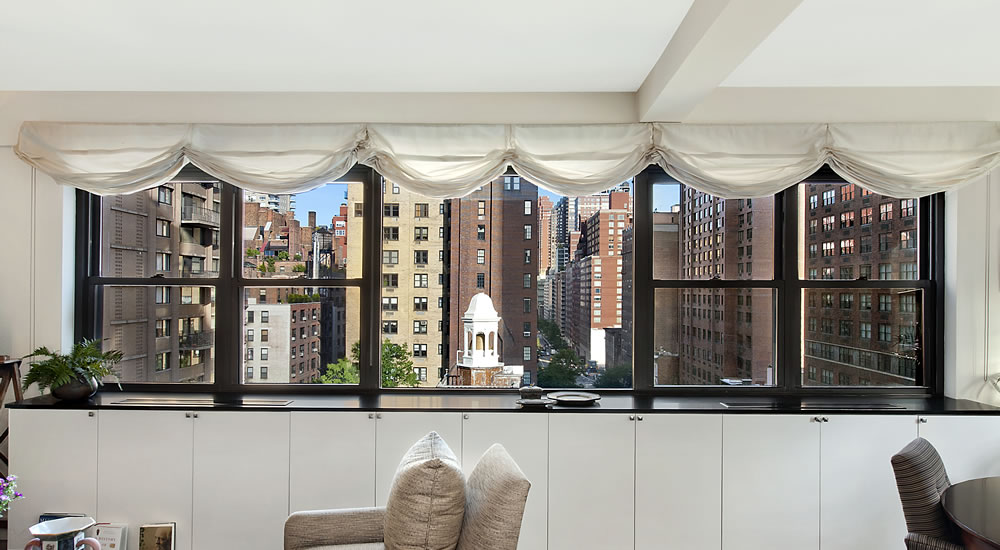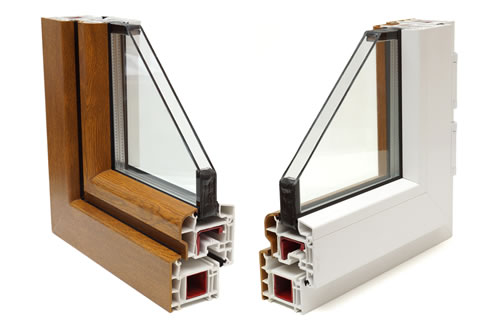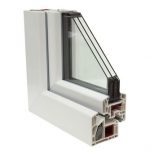
How Do Soundproof Windows Work?
There are a number of soundproofing methods you can employ to quiet the noise, but the right method or material will depend on the source of the noise, how loud it is, and what space you are looking to soundproof. If sound is entering through your windows, interior the most effective way to stop outside noises from entering your home.
Interior soundproof windows work by adding mass, creating a buffer zone, and sealing gaps that can amplify sound vibrations caused by exterior noise. To understand how exactly soundproof windows work, it helps to first understand some of the basic principles of noise transfer, so let’s jump in.
Soundproofing Basics: Noise Transfer
Within a room, a sound will originate at its source and project outwards in all directions. A room’s flat walls, ceilings, and floors are highly reflective of sound waves, causing sounds to bounce off these flat surfaces and reverberate back into empty spaces. If you’re dealing with poor acoustics within a room, you may want to look into installing sound absorbing panels to reduce echo and reverberation within your space. Carpeting and wall hangings can also help absorb sound and reduce echo.
When it comes to outside noise, sound behaves a little differently. Sound waves that originate outdoors will travel through the outside air, hit the walls and windows of your home, and make those solid materials vibrate. The energy of these vibrations will transmit through glass, wood, and some other surfaces, making the air vibrate on the other side and causing noise inside your home, office, or conference room. In addition to these vibrations, sound waves can easily find their way through even the tiniest cracks and openings in windows and doors, further amplifying the noise incursion.
If you are having problems with outside noise, there are three likely culprits:
Doors
Because doors are commonly made of lighter materials with lower mass, they are not always effective at blocking sound. If there are also cracks and gaps in door seals, noise incursion will be more noticeable. Weatherstripping installed around the perimeter of a door can help seal out noise, dirt, and drafts.
Walls
Because doors are commonly made of lighter materials with lower mass, they are not always effective at blocking sound. If there are also cracks and gaps in door seals, noise incursion will be more noticeable. Weatherstripping installed around the perimeter of a door can help seal out noise, dirt, and drafts.
Windows
Noise transfers very easily through glass, even in a properly sealed window. If your windows aren’t well-sealed, the noise incursion can be exacerbated by cracks and gaps in the seal. Some standard windows offer greater soundproofing benefits than others, but none are effective enough to be considered true “soundproofing” windows.
Single pane windows, which consist of a single pane of untreated glass, are common in older buildings. These windows are the least effective at stopping sound—loud speech can be heard and understood through a single pane window.
Double pane windows are now the standard for newer buildings, featuring two panes of glass in the same casement with a small gap between each pane. Some double pane windows feature insulating argon gas to improve soundproofing qualities, while others feature “dissimilar glass”—two panes of different thicknesses—to help block different sound frequencies.

Triple pane windows feature three panes of glass. The space between the panes is often smaller, so there’s little to no measurable improvement in the soundproofing benefits of these windows compared to double pane windows—in fact, noise transfer can actually be worse because the smaller space between panes generates more reverberation, leading to amplified sound.

The best way to pinpoint the source of a noise is to stand close to the area you think the sound is originating from, close your eyes, and listen very carefully. If you are unable to identify the source of a noise, your best bet is to hire an acoustical consultant to help you diagnose the source, measure noise levels, and suggest the best way to block the sound.
If your windows are your main source of noise incursion, soundproof windows will offer the greatest reduction in noise. There are two main types of soundproof window, which we will explore in more detail below. Both are suitable for different circumstances and offer varying degrees of effectiveness.
How Do Soundproof Windows Work?
The effectiveness of a soundproof window is measured using something called “Sound Transmission Class”, or “STC”. STC is a rating system used to determine how effective a material is at blocking or reducing sound waves, with effectiveness dependent on mass, damping, and stiffness. The higher the rating, the more sound is blocked. Standard windows are also given an STC rating.
To be considered soundproofing windows, a window must eliminate 90-95% of exterior noise—this typically means they’ll have an STC rating around 45-50. For comparison, single pane windows have an STC rating of 26-28, double pane windows have an STC rating of 26-37 depending on the construction of the window, and triple pane windows have an STC of around 31-41.
Let’s take a closer look at two types of soundproof windows:
1. Laminated glass
Laminated glass windows feature a transparent layer of plastic sandwiched between two outer layers of glass. This inner plastic layer deadens noise and vibrations that are easily transmitted through glass. With an STC rating around 35, loud speech can be heard but not understood through a single pane of laminated glass. Laminated glass can be used as both a primary exterior window and as an interior soundproof insert. When used as a building’s primary, exterior windows, laminated glass is typically installed during construction or as part of a larger renovation that involves replacing the windows entirely.
2. Interior soundproof window
Sometimes called acoustic windows or acoustic window inserts, interior soundproof windows are not a replacement window. Instead, new, laminated glass or insulated laminated glass is installed inside your existing window frame to create a buffer zone between the two sets of windows. With an STC rating of at least 45 up to the mid-50s, interior soundproof windows can block up to 95% of exterior noise depending on the quality of the exterior window, the thickness of the laminated glass in the interior window, and the size of the airspace between the two windows, making these the most effective soundproofing window. These windows are ideal for soundproofing existing windows without undergoing an extensive renovation, and are suitable for historic buildings.
Soundproof windows work by creating an additional barrier between the source of the noise and your ear. They do this by:
- Adding mass: Adding mass by using a second layer of laminated glass or insulated laminated glass is the most effective method of soundproofing windows. The best soundproofing windows will feature an inner PVB (polyvinyl butryal) layer that adds mass while also providing additional sound damping qualities, resulting in a sound transmission loss (STL) increase that could only be otherwise obtained through significant increases in glass thickness.
- Creating a buffer zone: By adding a second layer of laminated glass or insulated laminated glass, interior soundproof windows create an air space that acts as a buffer zone between the new window insert and the existing exterior window to help trap sounds. Laminated glass exterior windows on their own will not create an air space and are therefore not as effective at reducing noise as adding an additional interior window.
- Sealing gaps: Gaps are especially common in older, historic buildings, as well as buildings with wooden window frames, and can be a significant source of noise. If the perimeter of the window frame isn’t properly sealed, a second layer of laminated glass or insulated laminated glass interior soundproof windows will not be as effective. The perimeter of the exterior windows should be properly sealed in order to achieve the best possible result. The best soundproof windows will be precisely fitted to your existing window frame, custom manufactured, and properly sealed using acoustical sealant to ensure there are no gaps for sound to pass through.
Both laminated glass and interior soundproof windows inserts add mass, but laminated glass exterior windows on their own will not create an air space, and will only seal gaps if the windows are newly installed and properly sealed. Custom-made interior soundproof windows work in conjunction with the existing exterior window by creating a tightly sealed airspace that traps stops sounds from entering your space.
Cityproof’s soundproof Citiwindows are custom-fitted and manufactured laminated glass interior windows. They are installed on the inside to work with your existing windows, mirroring the horizontal and vertical lines of the exterior window so they don’t block your view. In addition to using laminated glass or insulated laminated glass, Citiwindows have a unique perimeter tracking system that creates a tightly-sealed airspace between the exterior window and the acoustic window insert to lock out up to 95% of exterior noise, as well as dust and dirt. Citiwindows are custom-made in multiple styles, including horizontally sliding panels, vertically sliding panels, hinged panels, stationery or lift-out panels, or a combination of these.
Stopping Exterior Noise with Soundproof Windows
Both laminated glass and interior soundproof windows inserts add mass, but laminated glass exterior windows on their own will not create an air space, and will only seal gaps if the windows are newly installed and properly sealed. Custom-made interior soundproof windows work in conjunction with the existing exterior window by creating a tightly sealed airspace that traps stops sounds from entering your space.
Cityproof’s soundproof Citiwindows are custom-fitted and manufactured laminated glass interior windows. They are installed on the inside to work with your existing windows, mirroring the horizontal and vertical lines of the exterior window so they don’t block your view. In addition to using laminated glass or insulated laminated glass, Citiwindows have a unique perimeter tracking system that creates a tightly-sealed airspace between the exterior window and the acoustic window insert to lock out up to 95% of exterior noise, as well as dust and dirt. Citiwindows are custom-made in multiple styles, including horizontally sliding panels, vertically sliding panels, hinged panels, stationery or lift-out panels, or a combination of these.
